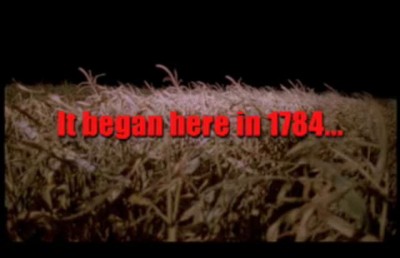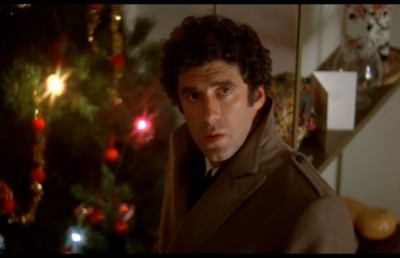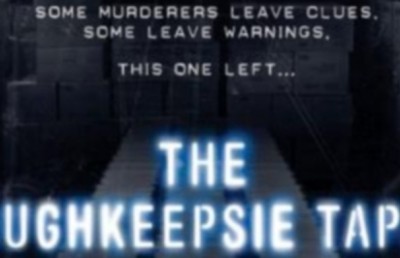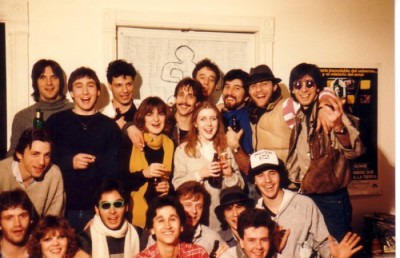Cloverfield: An Intimate Apocalypse
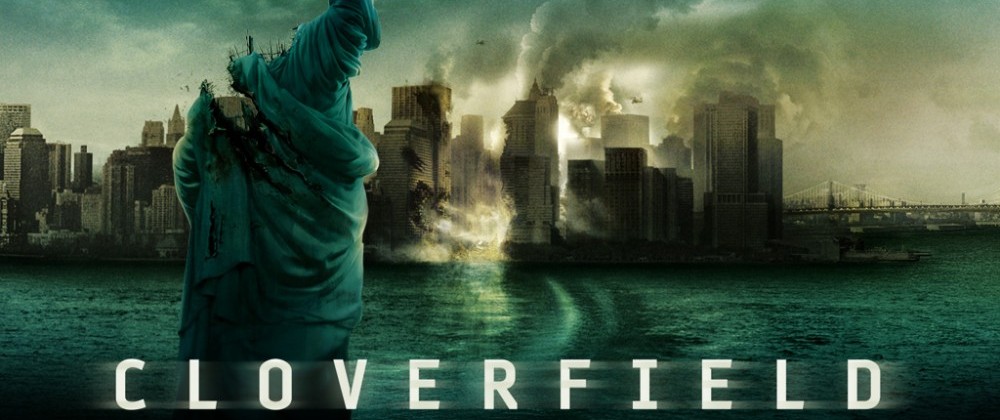
From both a dramatic and technical standpoint, Cloverfield is a very impressive film. In fact it is one of the best cinematic representations of complete and utter chaos I have ever seen. The sense of mass hysteria and audience identification with the onscreen horrors go far beyond that found in past Big Monster movies, even very good ones like King Kong (1933, Merian C. Cooper, Ernest B. Schoedsack), Beast from 20,000 Fathoms (1953, Eugène Lourié), Godzilla, (Ishirô Honda, 1954), and 20,000 Million Miles to Earth (1957, Nathan Juran). After a quaint 15 or so minute opening at the home party of a group of preppy, 20-somethingers, the ‘normality’ of the occasion is disrupted by a mega-bang –a literal earthquake-like tremor that knocks out most of the city lights– after which the film does not let up. At a time when two hour plus movies are becoming the norm, it is refreshing to see a film which trims any excessive fat right down. There is no time wasting here on exposition –arguably the opening house party scene which introduces all the main characters goes on too long– explanation, character development, or resolution. What we see is a chunk (80 minutes) of roughly one night (real time, with the exception of the times when the camera is ‘turned off’). The chaos is experienced from the POV of one single camera and (mainly) a small group of friends. What is interesting is how well it the sticks to this one camera conceit and how well it pulls off the obvious (if you stop to think of it) paradox of a low tech premise (filmed with a consumer camera, by someone with little camera experience) mixed with a big action/destruction film feel.
Much of the talk surrounding the film is, and rightly so, about the film’s style, or more precisely, the decision to structure the film as if shot by a home movie/camcorder video. The premise –not so new now after Cannibal Holocaust and Blair Witch Project??– is that we are watching unadulterated footage of the event as filmed and experienced by a single camera. The film we are “about to see” begins as footage found by the government in an area “formerly known as Central Park” (but, who is ‘showing’ it to us?). The film begins in April with a camcorder recording the morning after a young couple’s date and night together. The opening images are of Rob (Michael Stahl-David) recording the New York cityscape from the high vantage of a high-rise apartment, owned by her girlfriend Beth’s (Odette Yustman) father. This high angle vantage, now peaceful, almost romantic, sets up one of the film’s visual motifs: characters looking at the city below from an aerial/high position. This location will later be the site of one of the film’s best setpieces, when Rob returns after the attack is in high gear to rescue Beth from the nearly destroyed building. We see playback snippets (which function as flashbacks) of their first date at Coney Island, which will also come back in important ways and accrues emotional weight. And in fact ends up being the film’s last image. The ‘narrative/recording’ starts up again in May, with a going away party for Rob, who is about to leave for a ‘vice-president’ position in Japan (a cute homage to ??Godzilla?). Along with Rob and Beth, all the other major characters are introduced in this scene: Rob’s brother Jason (Mike Vogel), his girlfriend Lily (Jessica Lucas), gawky Hud (T.J. Platt), and outsider/rebel Marlena (Lizzy Caplan). Lily entrusts video testimonial duties to Jason, who promptly delegates to camera-illiterate Hud, who uses the camera to talk up Marlena. When Beth arrives at the party with another guy, Rob’s reaction suggests he still has feelings for Beth (a gesture which also must bear the weight of justification for Rob’s relentless determination to rescue Beth). The party is rudely interrupted by the huge city-wide blasts, which have the twentysomething yuppies going rooftop to view the disaster below, before the necessary desertion of the building.
Once at street level, the attack, seen through Hud’s eager camera, becomes intense and personal. In one great effect, the head of the Statue of Liberty comes crashing onto the street, sliding to a grinding halt homage to another classic apocalyptic masterpiece, Planet of the Apes). This major attack from the vantage of a NY city street is undoubtedly patterned after some of the iconic street level images taken during 9/11 (long street flanked by huge skyscrapers at the end, stores aligned on the sides, chaos, billowing smoke, etc.). Outside of the film’s use of mock camcorder aesthetics, this parallel to 9/11 is the other aspect most mentioned by reviewers. As noted by Roger Ebert, “So the statute has run out on the theory that after 9/11 it would be in bad taste to show Manhattan being destroyed.”
The location change from the house party to the social spaces, also marks a shift from the amateurish camera technique featured during the opening party, to a much more sophisticated camera work, all the while maintaining the frenetic, hand-held style. It’s as DP Michael Bonvillain did his job too well: aping first the style of a neophyte in the opening party scene, but then the style of a (essentially himself) professional camera operator working under great physical and emotional pressure (not unlike some of the frenetic camera work in Children of Men). Not only is camera movement and composition itself a stylistic impossibility for the conceit, but there is no way a consumer grade camcorder could have registered the dramatic lighting latitude that occurs when, for example, they exit from the dark subway location to the brilliantly sunlit triage center in the Bloomington department store. There is a formal impossibility to the conceit –that of the impressive camera movements, framing, and lighting, the supposed ‘in-camera editing’ (everything occurs in real time…what we don’t see is a result of Hud turning the camera off for an unspecified time)- but this formal ‘impossibility’ works because the illusion of it is achieved so well. What I did like here, as compared to Blair Witch Project, is that the conceit of the film –this is real and really happening now– is a stylized gesture, and the film is not playing the game of trying to make you think that it is ‘authentic.’ Even though Hud on several occasions stresses his almost sacrificial dedication to getting this momentous event on camera (“Someone has to record this”), there are a few moments in which Hud continues filming where our suspension of disbelief is seriously challenged.
Another aspect of the film which raises the realism level is how tangential strangers and other authority figures are to the main thrust of the film. The depiction of the military, who are seen in fits and starts, is also one of the most realistic I’ve seen; the way they interact within themselves and the civilians, not heroes or villains, just people doing their job.
As mentioned earlier, the opening location is revisited and becomes part of a great setpiece, when Rob, Hud, and his brother’s girlfriend Lily (Jessica Lucas) rescue Rob’s Beth from her battery rammed building. From street level we see the surreal image of her crumbling high-rise apartment building leaning against an adjoining building, like a modern day Tower of Pisa. The only way to access her apartment is through the roof of the adjoining building, going, literally, up, over, and down. Maintaining the visual motif of great vistas from above, the monster is seen below at street level causing havoc.
Fittingly Hud, who has ‘filmed’ most of the movie, gets the best death scene. After rescuing Beth, Hud lags behind as they run for safety and is trapped right under the monster, who slowly leans bends his huge body down, his face filling the frame, and attacking Hud. All we see is a blur of action. Is the monster going to swallow the camera and end the film right there…no, there would be no film if that happened. Instead Hud falls to the ground, his face conveniently framed in the right foreground of the frame, inches away from his fallen camera. The auto focus continually shifts the focus from his face to the background, as the sensor can’t decide what is the shot’s main focal point. The gesture of the fallen, unmanned camera filming a dead character from the floor instantly recalls the same effect used by Wim Wenders at the end of The State of Things (2002).
The film is bleak, and wonderfully inconclusive. We know that the big, reptilian-like creature sheds smaller, many tentacled, ferocious, but killable, monsters (parasitic lice apparently), and is able to emit Godzilla-like fire bombs. We know that even bites from the smaller monsters are fatal. Marlena gets bitten by one of the creatures in the nightmarish subway tunnel attack and she deteriorates physically as her symptoms worsen. (The subway tunnel scene produces one of the film’s best scares. When the subway tunnel becomes pitch dark, they turn on the camera’s night vision effect, at which point, from a low angle, we see the small, tentacled, spider-like creatures directly over their heads scuttling along the tunnel roof.) Marlena manages to reach the military sanctuary, the triage, at which point she feels very ill. She begins to bleed from her eyes. The military, acting as if they are aware of what to expect, quickly whisk her away behind a wall of curtains, where –from what we can make out– she appears to explode (or implode). Even though we get to see much of the effects, all we know about the monster’s origins are snippets of speculation: it may be from outer space, from the ocean, from a crevice in the earth, or maybe it is a by-product of some military/government testing. (Doesn’t a military code name –Cloverfield– always imply a conspiracy?) In a Village Voice review Nathan Lee refers to the monster as “al-Qaedzilla”! As Rob states to the camera during a moment of respite: “If you’re watching this tape you probably know more than I do.”
Rob and Beth are rescued by a military helicopter and taken away to momentary safety. Or so it appears. From above (the final of such high angle vistas) they witness an aerial missile attack that hits and apparently kills the monster. Seconds later, with the helicopter too low for comfort, the monster rises and smashes the helicopter, sending it earthbound, with the audio portion of the camera recording Rob’s frantic cries for mercy. The helicopter crashes, killing everyone on board. The force of the crash causes the camera to switch from recording to play mode, in the process switching the image over to what had been previously on the tape: Rob and Beth’s pre-disaster date at Coney Island Park (we learn earlier in the film that Hud was taping over this footage, and in fact we see this Coney Island Park footage once or twice before). The film ends on this ironic moment of bliss.
Although unique, Cloverfield is not made in a vacuum, but comes as part of a wave of apocalyptic movies. The end of the world is apparently hot on American screens. Is this a delayed fallout of 9/11, and the ensuing years of war, weak political leadership, and a faltering economy? Along with Cloverfield there has been the often filmed I am Legend, The Mist (with its Biblical overtones), and the upcoming M. Night Shymalan The Happening. Although Godzilla is an obvious inspiration, a more recent influence is the Korean monster-attacking-a-big-city film, The Host (2006). In a recent Time magazine article entitled “Apocalypse New,” Lev Grossman, notes this trend across all pop culture, citing the novel by Cormac McCarthy The Road (which won a Pulitzer Prize), the hit comic book Y: The Last Man, a Pixar animated film entitled Wall*E, about “the last robot on an empty, trash-strewn future earth” (46), the TV show Jericho, and even video games (Half-Life 2). The trend goes back a few years to the Danny Boyle films 28 Days Later (2002), 28 Days Weeks (2007), and Sunshine (a dying sun), George Romero’s Land of the Dead (2005) and the Dawn of the Dead remake by Zack Snyder (2004), Spielberg’s War of the Worlds (2005) and many recent low budget/indie films, like Right at Your Door (Chris Gorak, 2006), The Signal (David Bruckner, Dan Bush , Jacob Gentry, 2007), and Mulberry Street (Jim Mickle, 2007).
Films that rely on a major conceit provide a stern test of an audience’s proverbial suspension of disbelief, and Cloverfield may be the litmus test for such films. There are many points along the way which gleefully challenge our suspension of disbelief. For example,
1) That the camera’s battery would last the eight or plus hours it took to film (even if Hud popped into a video store to get a new battery, as Rob did for his cell phone, shrink wrapped batteries are never charged).
2) That Hud, even factoring in his commitment to posterity, would continue filming under such duress
3) That what Hud films under such duress is as aesthetically pleasing as it is
4) That the aesthetic shortcomings of the camcorder are featured when it suits film. For example, Hud’s death scene described earlier. When Hud falls to his death the camera frames him in partial close-up and we get that notorious auto focus effect where the focus shifts abruptly from back to foreground. Why doesn’t this ever happen at any other point in the film?
5) That the lighting effects (not to mention composition, framing, editing) are too good for the on the fly set-up.
6) That the government, having found such a tape, would make it ‘public’
However, having brought these points up, the film still works, largely because it succeeds in first establishing the ‘intimacy’ that comes with camcorder filmmaking, and which has already become a significant style marker in the horror genre (My Little Eye, Marc Evans, 2002, 28 Days Later, Danny Boyle, 2002, Blair Witch Project, Daniel Myrick, Eduardo Sánchez, 1999, Alone With Her, Eric Nicholas, 2006, The Last Horror Movie, Julian Richards, 2003, A Film by Carroll McKane, Gary Sherman, 2006, The Poughkeepsie Tapes, John Erick Dowdle, 2007, and Fred Vogel’s August Underground/Toetag films). In his book The End of Celluloid Matt Hanson highlights horror as a genre which has benefited from the ‘small screen’ feel of DV technology:
In modern horror, what is unsaid, or only glimpsed, is more effective than the overstimulation of the slasher flicks of 1980s and early 1990s. Digital video excels at providing an immediacy in atmosphere that is more subtle and unsettling than these earlier gorefests. The connection is reinforced through more personal recording methods that relate to our direct experiences (22).
Cloverfield begins with an exchange between two young lovers who take turns filming themselves the morning after their first night of intimacy. This ‘immediacy’ is extended to a small group of tightly knit friends sharing a moment before a friend leaves for work abroad. However, when the subject is thrust outwards into the social spaces of city streets, subways, bridges, and apartment buildings, the same camcorder intimacy is carried over and refuses to give over to the wider, omniscient perspectives usually associated with larger/‘bigger’ technologies. In this case, smaller is better, and this contrast between ‘large’ and ‘small’ is no better served than the unsettling shot of the monster bending down, moving closer and closer to the intimacy of Hud’s tiny camera, until it engulfs the wide expanse of the theatre screen.
Bibliography
Ebert,. Roger. “Cloverfield.” Chicago Sun-Times. January 17, 2008.
Grossman, Lev. “Apocalypse New” Time (Canadian Edition). January 28, 2008, 45-47.
Hanson, Matt. The End of Celluloid: Film Futures in the Digital Age. Rotovision: Switzerland, 2004.
Lee, Nathan. “Douchebags, Run for Your Life!” Village Voice. January 17, 2008.



